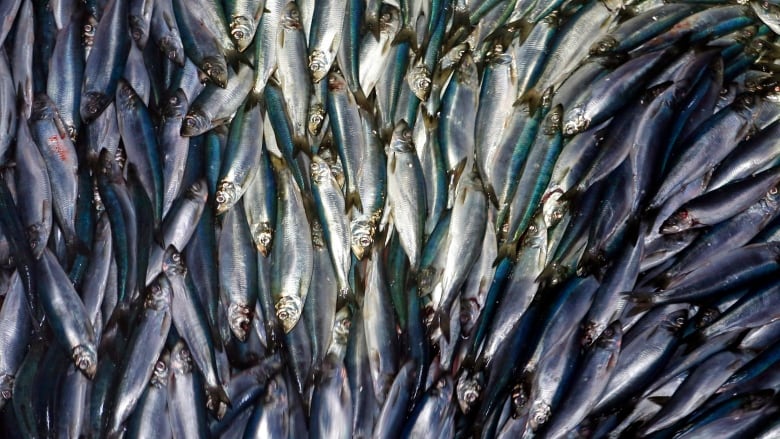Another big Maritime fishery quota cut looming
DFO says decision about herring quotas will be announced in the coming weeks

Another Maritime fishery is facing a big quota cut this year the only question ishow big.
This time it is the large herring fishery insouthwestern Nova Scotia and the Bay of Fundy.
The stock is in the critical zone where serious harm is occurring, but the fishery employs hundreds of people in Nova Scotia and New Brunswick.
What happens next will again test how far Canada's fisheries minister is willing to go to rebuild a depleted stock.
63% cut looms
If DFO decides to use a new modelling process, the quota would likely be slashed to13,050 tonnesfrom 35,000 tonnesa 62.7 per cent cut.
Thatadvice is the result of amanagement strategy evaluation, which is beingusedto produce a total allowable catch for this herring fishery for the first time.
The simulation-based process determines the quota or total allowable catch to achieve a desired outcome. The objective in this case is to get the herring stock out of the critical zone.
DFOhas refusedto say if it has decided to useadvice from the management strategy evaluation.
A department spokesperson told CBC News in an email thata decision on the quotawould be announced in the coming weeks.
The Bay of Fundy season opens in June.
Industry proposes smaller cut
One industry group has offered to cut the quota by 30 per cent.
In a news release, Bay of Fundy Herring Industry said it would be prepared to reduce the total allowable catch to 25,000 tonnes from 35,000 tonnes for the 2022 season.
"Our fishery recognizes the need for caution and to promote stock revitalization," said Nol Desprs, president of Saulnierville-based Comeau Seafoods,in the release.

Most of the quota is caught by seinersboats that use big nets to circle a school of herring as it comes to the surface.
The industry said it has undertaken voluntary conservation measures, citing major spawning ground closures, seasonal and weekend closures, and protections for juvenile fish.
"Our rebuilding efforts are showing signs of success, although it's going a little slower than what we were anticipating," said Tony Hooper of Connors Bros., based in Blacks Harbour, N.B.
Seeking to pause process
Industry leaders are alsocalling on DFO to pausethe management strategy evaluationprocess, claiming the modelling is flawed.
"More work needs to be done before it can be implemented," said Tim Kaiser of Scotia Garden Seafood Inc., based in Yarmouth, N.S.
"We're seeing inconsistencies in the model, and the best thing we can do now is to take a brief pause, get back to the table and resolve these issues before making long-term decisions for the fishery."

Environmentalist Sebastian Pardosaid the management strategy evaluation has been in development since 2019.The model wasfinalized after a review by DFO and external scientists.
"For the most part, the conclusion was that the science is robust," said Pardo, sustainable fisheries co-ordinator at the Ecology Action Centre in Halifax.
The proposed cut is far bigger in tonnage than the total shutdowns imposed on the Atlantic mackerel andGulf of St. Lawrence spring herring fisheries earlier this year.
"This is a much more difficult decision in terms of economic consequences. Any TAC[total allowable catch] reduction that big would be very painful for industry and it would have major consequences,"said Pardo.
"From a conservation perspective, this stock has been in the critical zone for a while and the sequential TAC reductions that have happened in the past have not resulted in population rebuilding.
"I think this is a major test."

West Nova MP Chris d'Entremont represents a Nova Scotia riding that is home to large herring processing plants and seiner ports.
"We understand there has to be changes. The biomass may not be there as we need it, but there's also other considerations that need to be brought forward," d'Entremonttold CBC News.
Nova Scotia Fisheries and Aquaculture Minister Steve Craig plans to meet with industry representatives next weekto talk about the quota.
Meanwhile, the herring industry is warning DFOthat sudden andsignificantchanges could be disastrous for business.
"Here at Connors we can deal with a certain level of change in the TAC from year to year, but we can't change our inputs and products overnight," said Hooper.
"It's difficult to keep the plant viable if we see drastic cuts in the TAC on short notice."












_(720p).jpg)


 OFFICIAL HD MUSIC VIDEO.jpg)
.jpg)



























































































